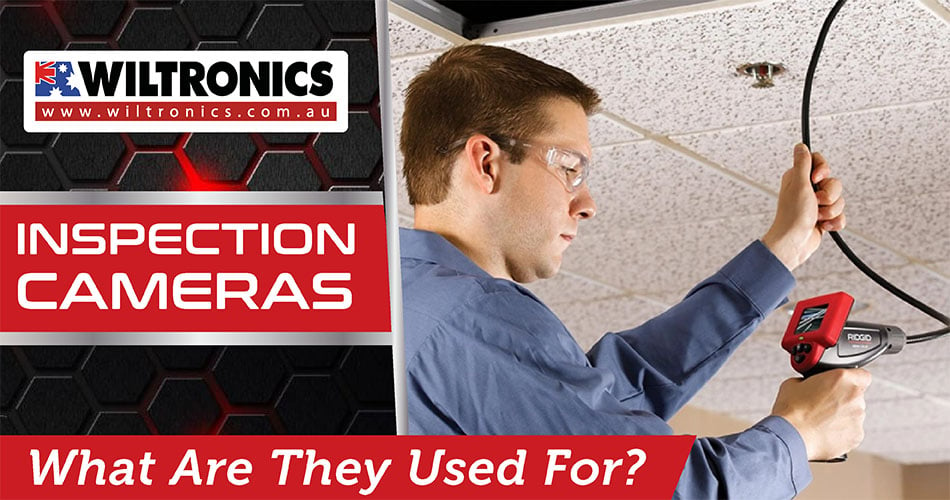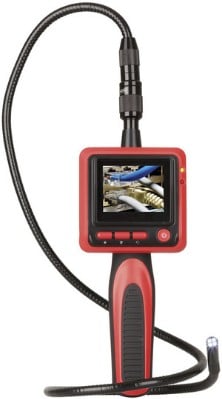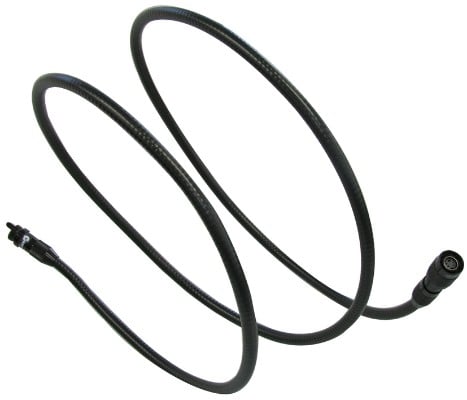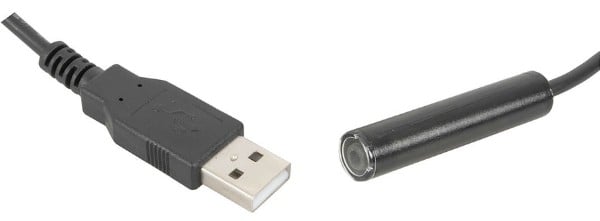All About Inspection Cameras: Types, Uses and Features
January 18, 2023

Inspection cameras are common on the market, but ever wonder what they are for?
There is a wide selection of cameras – available in different forms for various purposes.
The most common types are for photography and video, where DSLR and 4K units own this category. Next is home security surveillance with CCTV systems.
Besides personal, professional and safety uses, cameras are also adept in industrial settings. A great example is the borescope used for visual inspection work.
You may already be familiar with the first two. But if the latter may not ring a bell because you have never seen it before. To give you an idea, this post will cover the basics of inspection cameras.
Inspection Cameras Explained
An inspection camera, also referred to as a borescope, has three functions. A camera, microscope, and telescope. Its design, however, is what makes it special.
Unlike a normal camera unit, it can fit into narrow, cramped, or out-of-reach spaces, thanks to its flexibility. It has a B&W or colour display attached to the shaft, some of which are detachable for remote viewing.
Inspectors often utilise inspection cameras for collecting data. With one, you can collect the data you need in hard-to-reach or inaccessible spaces. Even better, it enables you to zoom in on potential defects.
They do well in hard-to-reach areas, such as in plumbing applications or inspecting:
- blockages, damage and corrosion
- ceiling, gutters, and vents
- machinery and manufactured goods
- medical diagnostics
- source of leaks and pests
- under floors
- within walls and cavities
Borescope inspection cameras
A borescope is an umbrella term for an inspection camera that is not intended for medical use. There are two main types: rigid and flexible.
Both rigid and flexible borescopes can come with fibre optic or rod-based lenses. In this case, inspection cameras with this feature are often called ‘fibrescopes’.
Wireless inspection cameras
A wireless inspection camera is a generic term used for borescopes and endoscopes. As the name implies, this type of camera can provide a video stream to a remote screen over WiFi.
Extra features
Inspection cameras typically have a long, flexible probe or arm attached to the base unit. The camera module is mounted on the end of the probe.
The display will show you what the camera sees once it is manoeuvred into position. Often, a small screen lets you view the live video relay.
As mentioned, other models can operate wirelessly. Some can stream the images they capture on a computer or phone via WiFi.
What Are Inspection Cameras Used For?
There is a broad range of inspection cameras that cater to diverse and specific jobs.
For one, an inspection camera with a flexible shaft or ‘insertion tube’ is referred to as an endoscope. Endoscopes are often used in medical and veterinary applications. Other uses include:
- For viewing the engine’s interiors in automobiles and aircraft by mechanics.
- Checking for blocks and breaks and determining where to run pipes and wires. Done by electricians, plumbers, and HVAC technicians.
- Examining pests’ hives, nests, and tunnels by exterminators.
- Reading wafer locks or looking into a safe or vault for locksmiths and safe technicians.
- Vehicle inspection for law enforcement (e.g. police, military, and security).
They also make a great tool for:
- Building inspectors
- DIY enthusiasts
- Maintenance staff
- Mechanical engineers
- Property maintainers
- Surveyors
Some inspection cameras can capture still images and record video using an SD card. This makes them ideal for when you want to document/record your inspection process.
Other models also feature digital zoom and image rotation, offering a much-improved observation. Perfect for both amateur and professional, an inspection camera can be just the tool you need!
Features to Look For
An inspection camera has three main elements:
- The camera
- Flexible pipe
- Handset
The way an inspection camera performs depends on these components. So when making your choice, make sure to consider them.
The camera
The camera should be less than 10mm. The smaller the camera, the more precision it can provide. In short, small camera heads offer higher-quality viewing.
Most, if not all, are assembled by non-specialist companies. Hence they’re a lot cheaper. This results in low-cost cameras. Tip: A camera head around 9mm is ideal, but less than 6mm is preferable.
Flexible pipe
Other than the camera should be under 10mm, the camera head design should be:
- Chemical resistant
- Flexible and rigid
- Robust
- Waterproof
The pipe is the main control for steering your camera. Too stiff won’t let you get around obstacles, whereas too flexible won’t enable you to direct or push them.
Avoid those with heavy camera pipes unless that specifically meets your needs. Not only are they hard to bend and manipulate, but also it can be complicated to get through and around things.
Handset
As for the screen size and image contrast, a 640x 480 image on a 2.4″ LCD often has better quality than the same image on a 3.5″ LCD.
For ergonomics, choose an inspection camera that fits in your hand. Also, ensure you are comfortable with the handle, mainly at times when using it in an awkward position.
Moreover, well-designed inspection cameras have all the controls within reach. This means you can control the menu options with your fingers and thumb with ease.
Get Your Inspection Camera & Accessories Here
Our range of Inspection Cameras & Accessories enables you to explore inaccessible areas. The camera unit itself features an easy grip and forward-facing controls. Accessories such as a Gooseneck extension and USB will also come in handy – get them below!

Inspection Camera 9mm 2.4 inch LCD Screen
Product code: JQC8710
With a camera diameter of only 9mm, a thorough inspection of some very tight spots is possible. The easy grip and forward-facing controls make it easy to analyse inaccessible objects. Needs 4 x AA batteries.

Inspection Camera Gooseneck Extension 2m
Product code: JQC8702
A 2m gooseneck extension shaft with threaded four-pin plug and socket for inspection camera. Compatible with JQC8710.

USB Endoscope Inspection Camera Budget 2.25m
Product code: JQC3373
A budget inspection camera accessory that you can connect to your laptop. It has three brilliant add-ons, a hook, a magnet, and a 45-degree mirror.
The brightness of the four white LED lights at the front of the camera is adjustable. With the supplied software, you can also capture video and images for playback at a later date. Requires no batteries; connect to your laptop, start viewing, and retrieve important bits.
The Bottom Line
Inspection cameras are a must-have tool for many electricians, mechanical engineers, and more. If that is your line of work, or you are a household DIYer, you should have one in your toolbox!
Their ability to see obscure places is what makes them outstanding. Investing in one also allows you to diagnose plumbing, HVAC systems issues, and much more.
This article was originally published in July 2021 and has been updated.
© Electrotech Brands Pty Ltd 2023


Write a Comment
You must be logged in to post a comment.